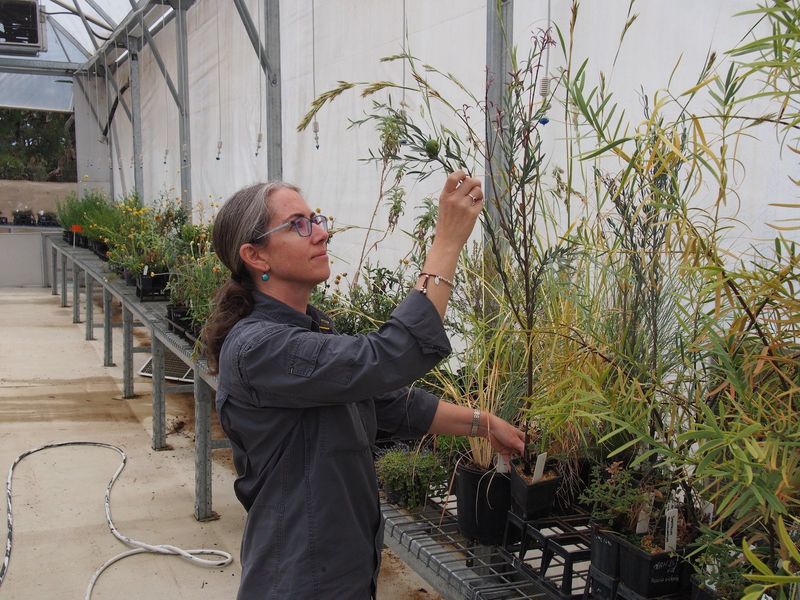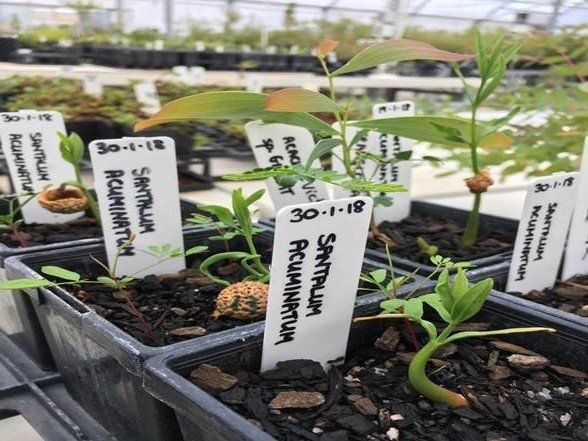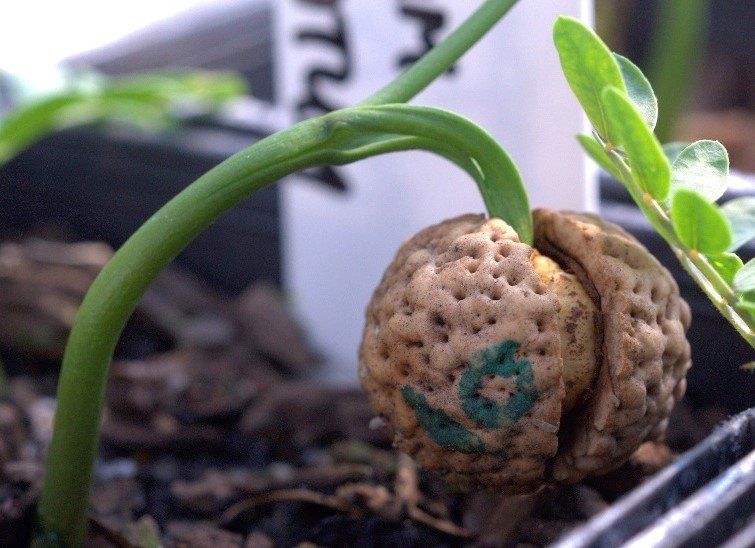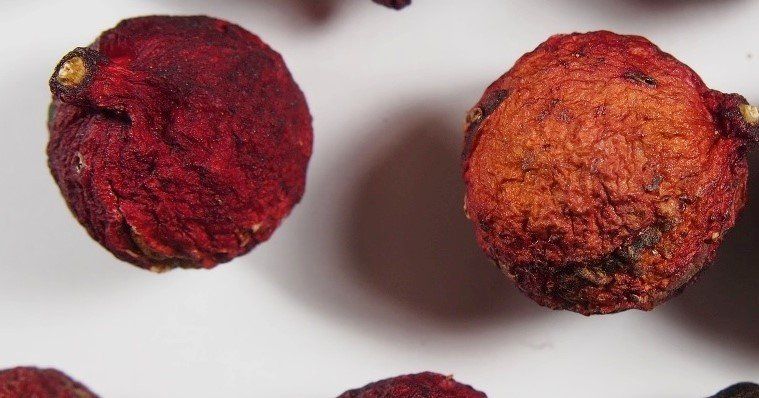ANBG grows seedlings to protect Uluṟu tree from extinction
The National Seed Bank at the Australian National Botanic Gardens (ANBG) has been working on a collection of seeds of Desert Quandong from Uluṟu-Kata Tjuṯa to better understand how to propagate the species.
Santalum acuminatum, Desert Quandong, is listed as vulnerable in the Northern Territory and has significant cultural value to the Aṉangu Custodians at Uluṟu-Kata Tjuṯa National Park.

There are 14 individual mature trees remaining in Uluṟu-Kata Tjuṯa National Park and these trees are at risk from wildfire and introduced feral herbivores (plant-eating animals).
The species is difficult to germinate because it has dormancy characteristics that have to be broken in order for it to begin to grow. It is also hemiparasitic, requiring a host plant of another species to survive and grow with.

To ensure the survival of the Desert Quandong population at Uluṟu-Kata Tjuṯa National Park, we will fence the population to protect it from camel and rabbit damage. We will also protect it from fire and propagate seedlings to supplement the existing population.
The National Seed Bank at the Australian National Botanic Gardens (ANBG) has been working on a collection of seeds of Desert Quandong from Uluṟu-Kata Tjuṯa to better understand how to propagate the species.
We have made progress with breaking physical dormancy by cracking the woody endocarp (innermost layer) surrounding the seed. We’ve overcome physiological dormancy by running the seed through an after-ripening rapid wetting and drying cycle.

As a result of the germination work by the National Seed Bank, we now have 19 seedlings growing at the ANBG nursery, along with their Acacia hosts.
Leaf material has been collected from these seedlings to assess genetic diversity. The next steps are to translocate 16 seedlings back to Uluṟu-Kata Tjuṯa National Park, and provide those seedlings with supplementary water and habitat protection.
By measuring the characteristics of the cells, we gain a better understanding of how best to increase the local genotype pool and enhance the genetic vigour of the population.


